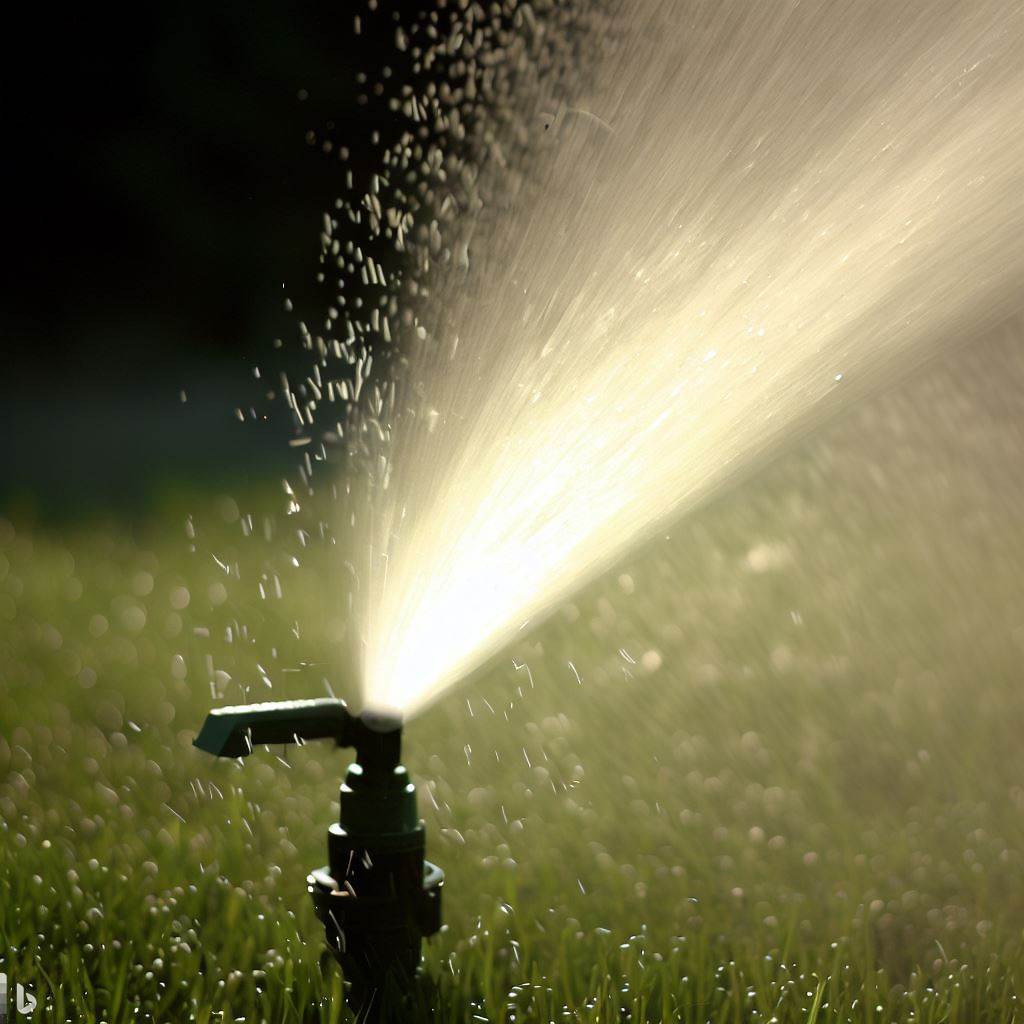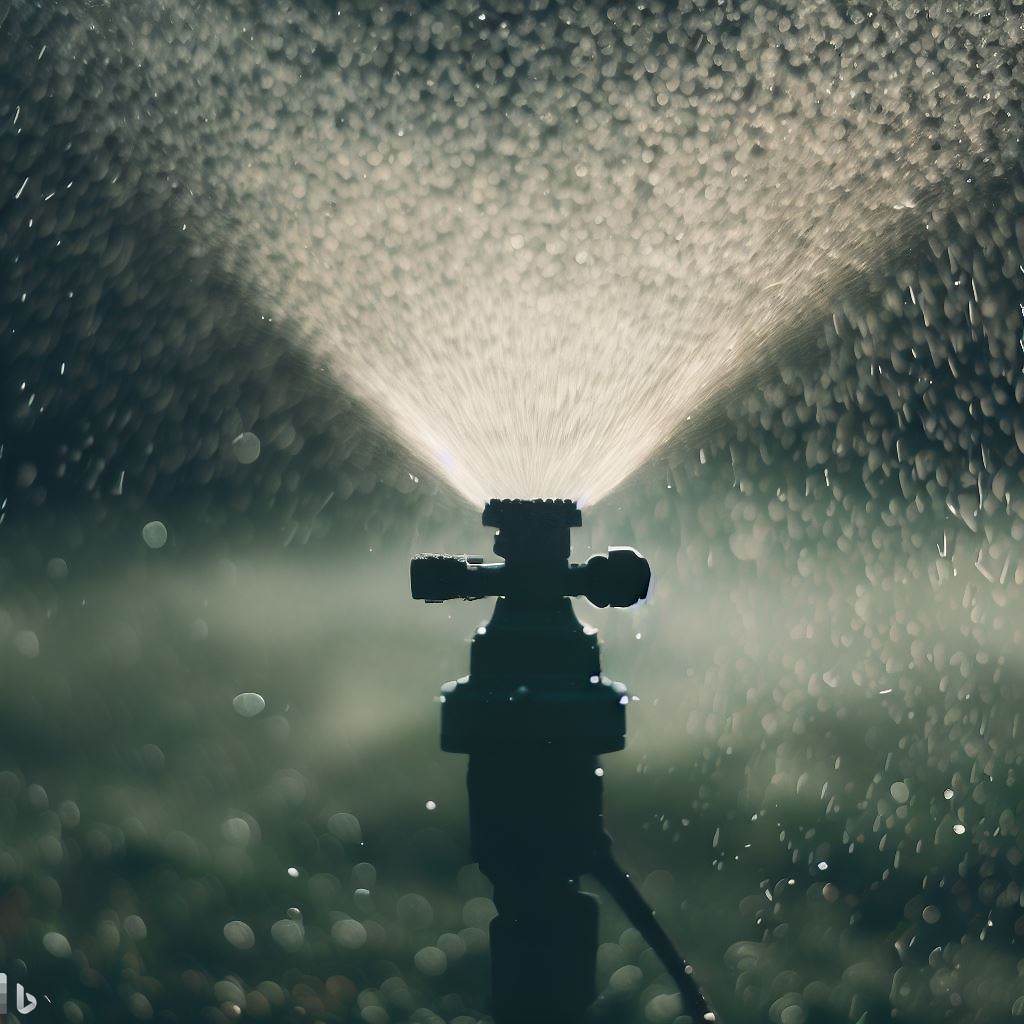Installing a sprinkler system in your yard can be a game-changer when it comes to maintaining a beautiful and healthy lawn. But before you start digging trenches and laying pipe, there’s one important question you need to ask yourself: what should the depth of sprinkler lines be?
The depth at which you bury your sprinkler lines is crucial for the proper functioning of your irrigation system. If the pipes are too shallow, they may be susceptible to damage from foot traffic, lawnmowers, or even freezing temperatures in winter. On the other hand, if the pipes are buried too deep, it could make repairs and maintenance more challenging.
In this comprehensive guide, we will explore all aspects of proper installation for sprinkler lines – from choosing the right depth for different types of sprinklers to potential problems with shallow or deep line placement. So grab your shovel and let’s dive in!
Here is an article you might be interested in diy snake baffle
Here is also another exciting article to read do bladder snails reproduce asexually

Factors Determining the Depth of Sprinkler Lines
Before we delve into specific depth guidelines for different types of sprinklers, it’s essential to understand what factors influence how deep you should bury your irrigation system pipes.
Soil Type
The type of soil in your yard plays a significant role in determining the appropriate depth for your sprinkler lines. Sandy soils tend to drain water faster than clay soils, so deeper burial may be necessary in sandy areas.
Frost Line
Another critical factor is knowing where the frost line lies in your region. The frost line refers to how deeply the ground freezes during winter months. By placing your pipes below this level, you can protect them from potential damage caused by freezing temperatures.
Foot Traffic
Consider any foot traffic that might occur on top of where you plan on installing your irrigation system pipes. If there will be heavy foot traffic near certain areas (like walkways or driveways), it’s wise to bury the pipes deeper to prevent accidental damage.
Choosing the Right Depth for Different Types of Sprinklers
Not all sprinkler lines are created equal, and different types of sprinkler heads require varying depths for optimal performance. Let’s take a look at some common types of sprinklers and their recommended burial depths:
1. Spray Heads
These popular pop-up sprinklers should typically be installed with their risers level with or slightly above the soil surface. This prevents them from being damaged by lawnmowers while still providing adequate water distribution.
2. Rotary Heads
Also known as gear-driven sprinklers, rotary heads usually require a deeper installation than spray heads due to their rotating mechanism. A depth range between 4 and 6 inches is generally recommended for rotary head systems.
3. Rotor Heads
Rotor-style sprinklers have longer throw distances compared to other types, making them suitable for larger areas. To ensure proper operation without interference from foot traffic, rotor head pipes should be buried around 8 inches deep.
4. Drip Irrigation
Drip irrigation systems involve low-volume emitters that deliver water directly to your plants’ root zones, minimizing evaporation loss. The tubing used in drip systems can generally be buried anywhere from 4 to 12 inches below ground depending on plant type and desired coverage area.
Installation Process and Techniques for Deep Sprinkler Lines
Now that you know which depth ranges are appropriate for various types of sprinklers let’s explore how you can properly install these lines at the desired depths:
1. Determine the Sprinkler System Design
Before starting the installation process for deep sprinkler lines, it’s crucial to have a well-planned system design. Consider factors such as water source, pressure requirements, area coverage, and zoning.
2. Site Preparation
Clear the area where the deep sprinkler lines will be installed. Remove any vegetation, rocks, or debris that may interfere with the installation process. Ensure the soil is adequately compacted and level to avoid settling or shifting of the lines.
3. Trenching
Digging the trenches is a vital step in deep sprinkler line installation. The depth and width of the trenches depend on the pipe size, frost line depth, and the type of soil. Use specialized trenching equipment or manual labor to create the trenches.
4. Pipe Selection
Select the appropriate pipe material for the deep sprinkler lines based on factors like soil conditions, water quality, and system requirements. Common pipe materials include PVC, HDPE, and polyethylene. Ensure the selected pipes are durable and resistant to corrosion.
5. Pipe Placement
Lay the pipes carefully along the trenches, following the system design. Use connectors or couplings to join the sections securely. Maintain a consistent downward slope to facilitate proper water flow and prevent pooling.
6. Backfilling
Fill the trenches with soil, making sure there are no voids or air pockets around the pipes. Compact the soil gently in layers to provide stability and minimize the risk of pipe damage.
7. Valve and Fitting Installation
Install control valves, backflow preventers, and other necessary fittings according to the system design. Ensure they are positioned correctly and securely connected to the deep sprinkler lines.
8. Pressure Testing
Conduct a pressure test to identify any leaks or weaknesses in the system. Use a pressure gauge to pressurize the lines and inspect all connections, valves, and fittings for potential issues. Repair any leaks or defects before proceeding.
9. System Flushing and Cleaning
Flush the deep sprinkler lines thoroughly to remove any debris or sediment that may have entered during installation. This step helps prevent clogging and ensures the longevity and optimal performance of the system.

Final Inspections and Adjustments
Perform a comprehensive inspection of the entire deep sprinkler line system. Check for proper alignment, functionality of valves, and coverage of sprinkler heads. Make necessary adjustments to ensure uniform water distribution and correct any deficiencies.
Once the installation process is complete, activate the deep sprinkler line system and monitor its performance. Observe the coverage and adjust sprinkler heads if needed. Ensure the system operates smoothly and delivers the desired irrigation pattern.
Maintenance and Regular Inspections
Establish a maintenance schedule to keep the deep sprinkler lines in optimal condition. Some key steps to consider include:
1. Regularly inspect the system for leaks, clogs, or damaged components.
2. Conduct preventive maintenance activities such as adjusting sprinkler heads, cleaning filters, and replacing worn-out parts.
Conclusion
Remember, proper installation techniques and attention to detail are essential for a reliable and efficient deep sprinkler line system. Following these guidelines will help ensure the longevity and effectiveness of the irrigation system.
Read another exciting blog post here do does blow at bucks
This is the article to read for today do hummingbirds sit still
FAQs
Q: How deep should sprinkler lines be?
A: Sprinkler lines should be buried at a depth of 8 to 12 inches to ensure proper installation and protection from damage.
Q: What is the purpose of digging trenches for sprinkler lines?
A: Digging trenches is necessary for the installation of sprinkler lines as it provides a pathway for the pipes and ensures they are properly positioned.
Q: What are sprinkler pipes?
A: Sprinkler pipes are the underground pipes that carry water from the main line to the sprinkler heads, allowing water to be distributed evenly across the lawn or garden.
Q: How does water pressure affect sprinkler systems?
A: Water pressure plays a crucial role in the efficiency of sprinkler systems. It determines the force at which water is sprayed out of the sprinkler heads and affects the coverage and reach of the water.
Q: How deep should the main line of a sprinkler system be?
A: The main line of a sprinkler system should be buried at a depth of 10 inches to ensure it is protected and does not interfere with any other underground utilities.
Q: How do I determine how deep to dig my trenches for a sprinkler installation?
A: Prior to digging your trenches, it is important to contact your local utility companies to identify any buried gas and water lines. This will help you determine how deep your trenches need to be.
Q: Do all sprinkler heads need to be at the same depth?
A: No, different sprinkler heads may require different depths to ensure proper water distribution. Always refer to the manufacturer’s instructions for the correct installation depth.
Q: Is it necessary to use a manifold for a residential sprinkler system?
A: Using a manifold is not necessary for all residential sprinkler systems. However, it can help in managing separate zones and water flow, making routine lawn maintenance easier.
Q: Can I water my lawn if my sprinkler lines are not deep enough?
A: If your sprinkler lines are not buried deep enough, you may run the risk of damaging the pipes when watering your lawn. It is important to ensure they are buried at the recommended depth.
Q: Should I call a professional if I don’t have experience digging trenches for a sprinkler installation?
A: If you don’t have experience digging trenches for a sprinkler installation, it is a good idea to call a professional. They have the expertise and tools to make the process easier and ensure the job is done correctly.